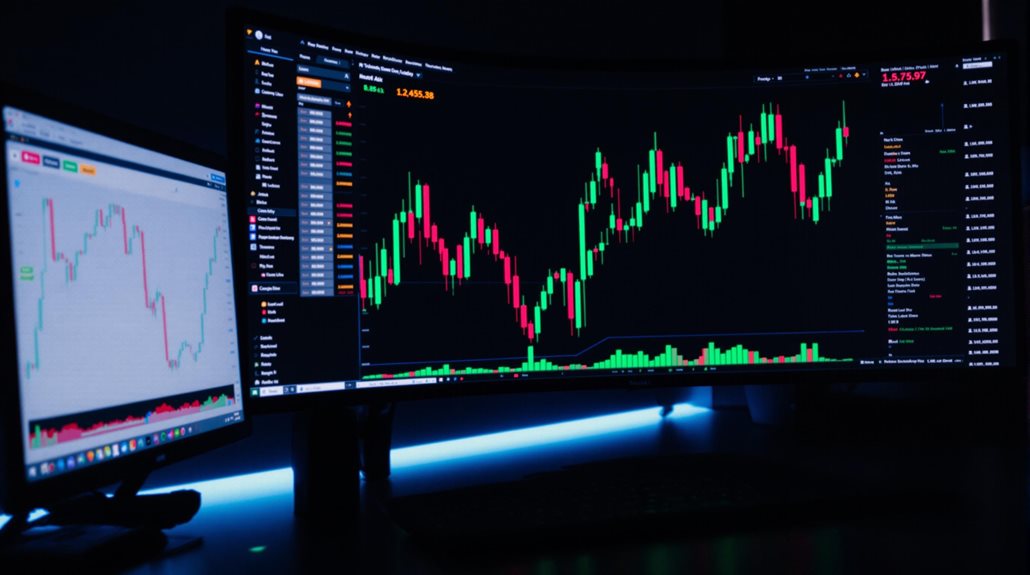Trading cryptocurrency starts with selecting a regulated exchange like Binance and setting up a verified account with security features enabled. Traders need to connect payment methods and develop clear strategies before executing trades through market or limit orders. Successful trading involves monitoring positions, tracking transactions, and staying current on crypto news and trends. The journey from beginner to experienced trader requires understanding multiple aspects of digital currency markets.

While cryptocurrency trading has become increasingly popular, getting started requires following several key steps. The first thing traders typically do is choose a cryptocurrency exchange where they'll conduct their trades. They look at multiple exchanges to compare trading fees, security features, and how easy the platform is to use. They also make sure the exchange follows regulations and has the proper licenses to operate. Smart traders check which cryptocurrencies are available for trading and what payment methods they can use. Users must ensure the platform has robust KYC and AML protocols in place for secure trading operations. Leading exchanges like Binance process over $40 billion in daily trading volume. Successful traders understand that emotional control is essential for making rational trading decisions.
Setting up an account comes next. Traders need to verify their identity through a process called KYC (Know Your Customer). This usually involves submitting government-issued ID and proof of address. Many traders protect their accounts by turning on two-factor authentication, which adds an extra security layer. They connect their bank accounts or credit cards to fund their trading accounts, often starting with small amounts to test how everything works. Long-term investing differs from trading by focusing on holding assets rather than frequent buying and selling.
Successful cryptocurrency traders develop clear strategies before risking their money. Some choose to make multiple trades within a single day, while others prefer holding positions for weeks or months. Day traders often use technical analysis, studying price charts and patterns to make decisions. Long-term investors focus more on fundamental analysis, looking at factors like technology developments and adoption rates. Most traders set specific points for when they'll buy and sell.
The actual trading process involves placing different types of orders on the exchange. Market orders execute immediately at current prices, while limit orders only execute when prices reach specific levels. Traders keep close watch on their open positions and overall portfolio value. They stay up to date with cryptocurrency news and market trends that might affect prices. Many use stop-loss orders to automatically sell if prices drop too far, helping to manage risk.
Record-keeping plays an important role in cryptocurrency trading. Traders track their trades, gains, and losses for tax purposes. They regularly review how well their strategy is working and make adjustments when needed. Some use trading journals to document what worked and what didn't.
As they gain experience, many traders fine-tune their approach based on market conditions and their results. They also keep detailed records of deposits, withdrawals, and trading fees to maintain accurate financial records.
Frequently Asked Questions
How Long Should I Hold My Cryptocurrency Before Selling?
There's no fixed rule for how long someone should hold cryptocurrency.
Different traders use various timeframes: short-term holders keep crypto for hours or days, medium-term investors hold for weeks to months, and long-term holders keep their assets for months to years.
The holding period often depends on personal goals, market conditions, and risk comfort level.
Research shows about 60% of Bitcoin investors choose long-term holding, known as "HODLing" in the crypto world.
What Are the Tax Implications of Trading Cryptocurrency?
Crypto trades have tax implications in the US. The IRS treats cryptocurrency as property.
When someone sells crypto, they'll owe taxes on any profits. Short-term gains (held less than a year) are taxed like regular income. Long-term gains (held more than a year) get lower tax rates.
Trading one crypto for another is also taxable. People must report all their crypto transactions, no matter how small, on their tax returns.
Can I Trade Cryptocurrency Using My Retirement Account?
Yes, it's possible to trade cryptocurrency using certain retirement accounts. Self-directed IRAs and some 401(k) plans offer crypto investment options.
However, there's been some pushback from regulators, including the Department of Labor's warning about crypto in retirement plans. Many traditional retirement accounts don't include crypto options.
When available, these investments are typically managed through custodians who handle the accounts and follow specific rules for cryptocurrency holdings.
Which Cryptocurrency Exchanges Are Safest for Beginners?
Several cryptocurrency exchanges are known for their strong security measures.
Coinbase, Kraken, and Gemini are popular platforms that offer features like multi-factor authentication and cold storage for digital assets. These exchanges also maintain insurance coverage and follow strict regulatory requirements.
They've implemented user-friendly interfaces that help newcomers navigate trading more easily. Each platform includes security features like withdrawal limits, IP verification, and alert systems for account activities.
Should I Use a Hardware Wallet or Exchange Wallet?
The choice between hardware and exchange wallets depends on someone's trading habits and security preferences.
Hardware wallets work best for long-term holders who don't trade often and want maximum security for their crypto.
Exchange wallets are popular with active traders who need quick access to buy and sell.
While hardware wallets offer better security, they're less convenient.
Exchange wallets are easier to use but have higher security risks.





